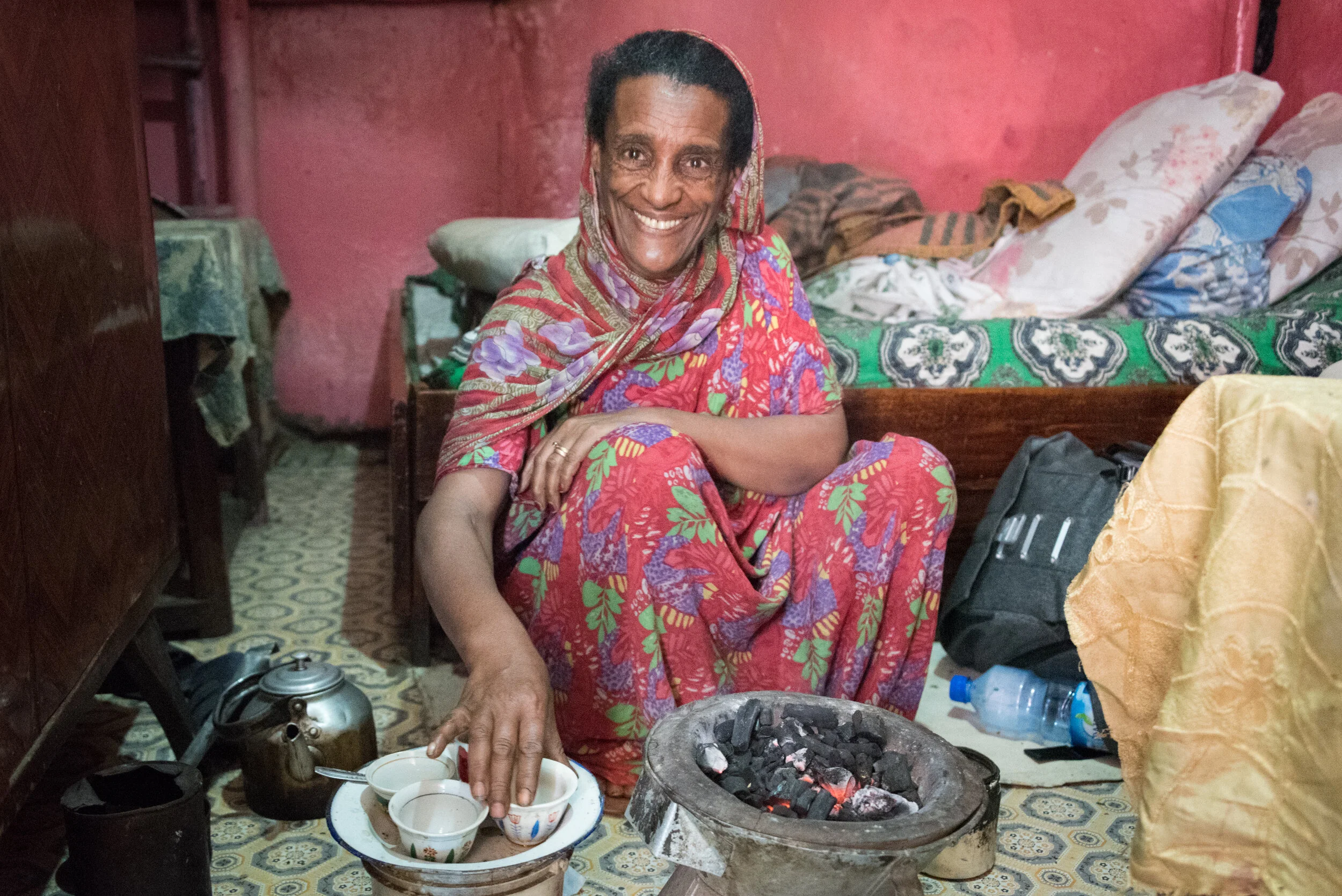Following the Safari adventure in Tanzania, our itinerary took an unexpected turn north, as we found ourselves in Addis Ababa, Ethiopia, primed for 2 weeks of tracing humanity’s origins, marveling at churches carved completely out of the earth, and, most importantly, eating.
Back in my working days, I often travelled to Atlanta where, almost every week, I’d find myself at a local Ethiopian restaurant, enjoying a collection of mystery mush and spongy pancakes. Little did I know, soon I’d be able to identify what exactly I was enjoying so much. The food is not for the faint hearted, as even the vegetarian dishes can do a number on the waistline, but it sure is delicious. Sampler platters became the dish of choice, where curries and mushes of all sorts and colors populated our plates, and injera replaced silverware. Chickpeas, lentils, lamb, goat, greens, and cabbages became shiro, beyaynetu, key wot, tibs, and gomen. Our go-to was “fasting food,” a meatless array of curries and greens that left our stomachs more than full with every sitting. Apparently, the meaning of “fasting” has been lost in translation a bit. Not to be outdone by the food, Ethiopian drinks hold their own as well. Honey wine, or Tej, can be found at most establishments, often times homemade. The mead-like drink is quite strong, and served in a beaker of hefty proportions (as usual). It goes down smooth, however, balancing out the post-meal heavy stomach with a light head for the walk home.
The star of the show, however, is the coffee. Supposedly the birthplace of the drink, Ethiopia does coffee just right – slow and strong, with some pomp and circumstance attached. An Ethiopian coffee ceremony involves taking a seat on tiny chairs amidst loose grass spread across the floor, while the woman (always the woman) of the household roasts raw coffee beans over coals. As the beans roast, every participant is given a whiff of the almost-ready beans before they are ground in the mokecha and placed into the serving pot for boiling. As if the smell of fresh-roasted coffee was not intoxicating enough, frankincense is burned as well, a delightfully woodsy-floral aroma filling the air. At last, the coffee is ready, poured into tiny cups for enjoyment, almost always served in threes, as is customary for most Ethiopian practices, representing the Holy Trinity. Often times, the tena’adam herb is served on the coffee, providing a slight herbal note. The coffee is strong, the build-up is worthwhile, and the experience one to take home. We were fortunate enough to be invited into a local’s home for the ceremony, enjoying hours of conversation as we watched the preparation and sampled some of the ubiquitous local narcotic, khat leaves. One sitting of khat was enough for us, but the coffee continued to roast and flow throughout the trip.
We left the small shack filled with caffeine and ready to continue our journey north towards the natural landmarks and historical sights of Ethiopia. While we continued to gorge on the food and indulge in the coffee, the hospitality experienced in Addis Ababa would unfortunately be more or less the last we’d see for the rest of our time in the country, but more on that later…





